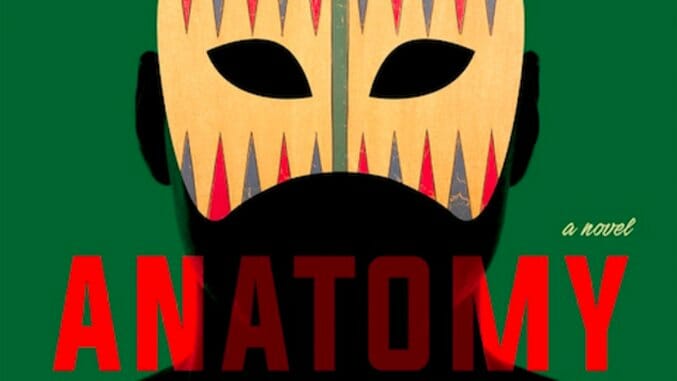
Is Jonathan Lethem’s latest novel a study in identity and self-perception, hidden beneath the mask of an underworld thriller?
Is it an examination of the brain, mind and consciousness, wrapped in the disguise of a dramatic homecoming story?
Or, rather, is it a discourse on the humanity’s uneasy conflict between anarchy and extreme wealth, cloaked in a reality-warping narrative of telepathic connectivity?
In A Gambler’s Anatomy, Lethem calls on his virtuosic versatility to stitch together an unpredictable and fascinating story, hopping continents, genre and subject matter with ease. At the fore is Alexander Bruno, a high-stakes backgammon hustler who finds himself in Berlin for a match intended to halt a bad luck streak he’d developed in Singapore.
 Bruno, however, has been experiencing a growing blot in the center of his vision and falls ill at his wealthy target’s home, suffering a bloody nose and losing unconscious. Scans at the hospital reveal a sizable tumor in his olfactory groove. Is the tumor fatal? Is it operable? Is it even cancer? More importantly to Bruno, could it be the cause of this recent string of bad luck?
Bruno, however, has been experiencing a growing blot in the center of his vision and falls ill at his wealthy target’s home, suffering a bloody nose and losing unconscious. Scans at the hospital reveal a sizable tumor in his olfactory groove. Is the tumor fatal? Is it operable? Is it even cancer? More importantly to Bruno, could it be the cause of this recent string of bad luck?
Those questions hang unanswered in the hospital’s sterile air as the book backtracks to Singapore and Bruno’s fateful encounter with Keith Stolarsky, an acquaintance from his youth in Berkeley. That tenuous reconnection has already upset Bruno, confronted by the “treacherous intensity of restored memory,” but it also provides his opportunity to return to the San Francisco Bay Area, on Stolarsky’s dime, for an experimental treatment by the one surgeon who could potentially help.
Stolarsky, a rich slob who litters the floor of his Jaguar with food trash, has earned a fortune—and a Darth Vader reputation—as a Berkeley developer and sets Bruno up in an apartment. Bruno’s return to California after 30 years is a culture shock. He understands the Darth Vader reference, but is bewildered at the mention of Hooters and popular shirts picturing a bearded man and the word “abide.”
The innovative and eccentric neurosurgeon who completes the 15-hour procedure, listening to Jimi Hendrix all the while, provides an amusing foil to Bruno, who understands what it’s like to be the best at what he does. (Perhaps overly fascinated by the intricacies of the surgery, Lethem makes a significant and plot-hindering digression in the surgeon’s direction.)
Waking from the successful procedure, Bruno discovers the removal of his tumor has returned the telepathic powers he’d long ago abandoned after deciding they were more a burden than a gift. “I need it back,” he tells the triumphant surgeon, fearing the tumor was in fact there to serve as a defensive mechanism. Rather than retaining that internal “mask,” Bruno leaves the hospital with a medical one to cover up his facial scars.
As the central character, Bruno is difficult to pin down, precisely because he’s in the process of unraveling. Even in the first chapter it becomes clear that he’s not a rakish man of mystery, but a man beset by mysteries. For all his control at the backgammon board, he steadily comes to realize that he’s lost whatever control he had over his own life.
Bruno’s fall from tuxedoed gambler to sweats-clad grill cook might simply be a reversal of past fortunes, the payment come due for prior success, but in Lethem’s hands it’s the novel’s richest section. Berkeley and San Francisco come alive, seen through Bruno’s eyes as a society split in two layers.
Lethem introduces a series of bizarrely named characters (Garris Plybon joining Chronic City’s Perkus Tooth among Lethem’s most outlandish) and invented businesses laden with metaphoric significance, none sharper than the contrast of rival burger joints, one featuring large-chested waitresses and similarly immense burgers, the other serving only sliders and anarchistic rallying cries.
Lethem handles this mish-mash of elements with remarkable clarity. Though A Gambler’s Anatomy may not rise to the level of the author’s best—Motherless Brooklyn, The Fortress of Solitude and Dissident Gardens—it’s a daring and animated novel. Full of Lethem’s trademark vitality, the prose is captivating even as it zeroes in on the aftermath of an upset stomach: “an oil-spill rainbow slurry of oysters, roast chicken, and prosecco.”
The beleaguered protagonist becomes a curious character study: Are the defining characteristics of a person really defining? Bruno, Lethem writes, “had forsaken luxury, possessiveness, wagering, everything that had made him himself. Yet he still existed, custodian of a tall, weird body on a rudderless voyage through time.”
In the end, is Bruno dissolved, an indistinct phantom no longer the sum of his parts? In returning home has he been restored, drawn back from a wayward path and made whole? Or is he merely a pile of animal meat, now wearing a different mask?